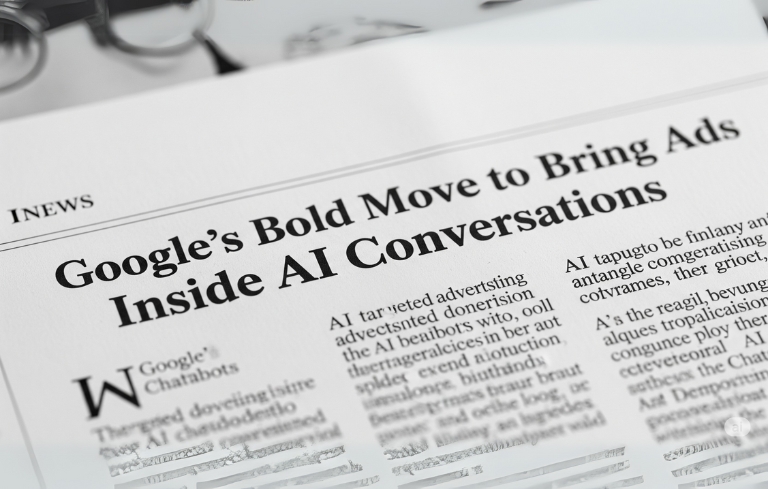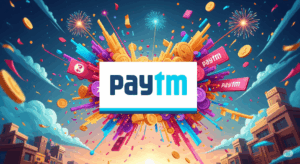Ever found yourself deep in thought, chatting with an AI chatbot about your next vacation, a complex recipe, or even a new business idea? Imagine, mid-sentence, the chatbot subtly suggests a flight deal, a specific ingredient delivery service, or a relevant business software. Sounds futuristic, right? Well, that future is arriving faster than we thought!
In a genuinely bold move, Google is already testing AdSense placements directly within AI chatbot conversations. This isn’t just a minor tweak to an ad network; it’s a monumental shift, signifying a new frontier for granular, context-sensitive ad formats. It’s poised to potentially open up entirely new revenue streams for publishers and platforms adopting AI chat functionalities, fundamentally changing how we think about digital advertising.
If you’re in marketing, publishing, or just curious about where the digital world is headed, this development is huge. It’s time to pull back the curtain on why this is happening, what it means for everyone involved, and how you can prepare for this brave new world of conversational commerce and AI monetization. Let’s explore!
Why Now? The Perfect Storm for Conversational Ads
To understand Google’s move, we need to look at the evolving digital landscape. Several factors are converging to make AI chatbot advertising not just plausible, but inevitable:
1. The Rise of Conversational AI:
AI chatbots like Google’s own Gemini, OpenAI’s ChatGPT, and others are no longer niche tools. Millions of people use them daily for everything from research and writing to problem-solving and brainstorming. As users spend more time interacting with these AI assistants, it creates a vast, untapped “eyeball” opportunity for advertisers. This isn’t just about search anymore; it’s about active, ongoing dialogue.
2. The Quest for Hyper-Personalization:
Traditional ads often feel intrusive because they lack context. But a chatbot conversation offers a treasure trove of real-time user intent. If you’re discussing “best noise-cancelling headphones for travel,” an ad for a specific brand or a link to a review site becomes highly relevant. This allows for granular, context-sensitive ads that are more helpful than annoying, potentially leading to higher engagement rates and conversion rates.
3. New Revenue Streams for Publishers & Platforms:
As AI Overviews change traditional search engine optimization (SEO) by often providing answers directly on the search results page (leading to zero-click content), publishers are looking for alternative ways to monetize their content. If their information helps power an AI chatbot’s answer, placing a relevant ad alongside that answer could become a viable revenue model. This is a crucial aspect for the future of publishing and content monetization.
4. Google’s Dominance in Advertising:
Google AdSense has long been the backbone of website monetization for millions of publishers. Expanding this established advertising network into the burgeoning AI chat space is a natural progression for Google, leveraging their core strength in ad tech and their vast network of advertisers.
How Could AdSense in Chatbots Actually Work?
While specifics are still in the testing phase, we can imagine several scenarios for how these context-sensitive ads might appear:
- Subtle Text Links: Similar to how text ads appear in search results, a brief, relevant text ad could appear alongside the chatbot’s answer, clearly marked as an “Ad” or “Sponsored.”
- Product Carousels: If the conversation is about products, the chatbot might display a small carousel of relevant items, complete with images, prices, and direct links to purchase (think e-commerce platforms integration).
- Service Suggestions: Discussing a problem could lead to suggestions for local services, complete with contact details or booking links. This would be a game-changer for local businesses.
- Generative Ad Copy: The AI itself could potentially generate the ad copy dynamically, ensuring it perfectly matches the tone and context of the ongoing conversation, leading to incredibly relevant advertising.
The key differentiator here is the conversational context. Unlike a static web page, the chatbot understands the nuances of the user’s current query, allowing for a level of ad personalization that’s been difficult to achieve elsewhere.
The Potential Impact: Who Wins and Who Needs to Adapt?
This move by Google carries significant implications for various stakeholders in the digital marketing ecosystem:
For Publishers & Content Creators:
- New Revenue Streams: This is the most obvious benefit. If your content is helping train or inform AI models, and those models then display ads, you could potentially earn a share of that ad revenue. This could offset potential losses from zero-click content in traditional search.
- Content Optimization Shifts: Publishers will need to think even more about structuring their content for AI comprehension (e.g., using FAQs, structured data, clear question-answer formats) to ensure their information is easily digestible by chatbots.
- Partnerships with AI Platforms: Expect to see more strategic partnerships between major content providers and AI chat platforms to ensure proper credit and monetization opportunities.
For Advertisers & Brands:
- Unprecedented Targeting: The ability to serve ads based on real-time conversational intent offers unparalleled targeting capabilities. Imagine reaching someone who is literally asking about a problem your product solves.
- New Ad Formats: Brands will need to innovate beyond traditional display or search ads. Creative, non-intrusive contextual advertising within conversations will be key.
- Brand Voice & Trust: It’s crucial for advertisers to maintain their brand voice and ensure ads are genuinely helpful, not disruptive. Abusive or irrelevant ad placements could quickly erode user trust in the chatbot experience.
For Users:
- More Relevant Information: When done right, conversational ads could actually be helpful, guiding users to relevant products or services they might genuinely need.
- Potential for Ad Fatigue: The challenge will be for Google to implement these ads tastefully. Too many or poorly targeted ads could lead to ad fatigue and a negative user experience, pushing users to ad-free alternatives or more privacy-focused AI.
- Data Privacy Concerns: Users will naturally have questions about how their conversation data is being used for ad targeting. Transparency from Google will be vital to maintain user confidence.
The Road Ahead: Navigating the AI-Powered Advertising Future
Google testing AdSense in chatbots is more than just a trial; it’s a clear signal of where digital advertising is heading. It underscores the growing importance of conversational AI and the need for marketers and publishers to adapt.
Here’s what you should be thinking about now:
- Understand Your Audience’s Conversational Habits: Are they using AI chatbots for research? What kinds of questions are they asking? This will inform your content strategy.
- Prioritize Structured Data & FAQs: As discussed in our previous article, making your content easily understandable by AI models through Schema Markup and FAQs will be even more critical.
- Experiment with AI Tools: Get hands-on with AI content creation and optimization tools to understand their capabilities and limitations.
- Monitor Industry Developments: The AI advertising space is evolving rapidly. Stay updated on new features, regulations, and best practices.
- Focus on Value: Regardless of the platform, the core of effective marketing remains providing value. If your ads can genuinely help a user in their conversational journey, they’re more likely to succeed.
This is an exciting, albeit complex, chapter in the digital marketing landscape. The future of advertising isn’t just about where you show your ads, but how intimately those ads understand and respond to the user’s intent in the most context-sensitive and helpful way possible. Google’s move into chatbot advertising is a powerful testament to this reality, and those who embrace it will be best positioned to thrive.







